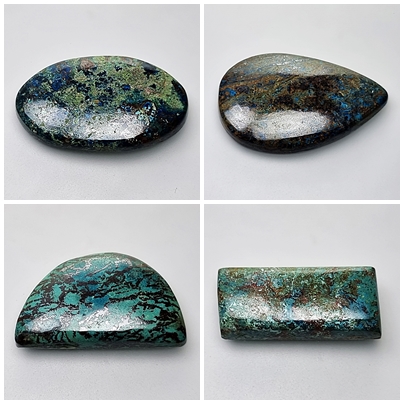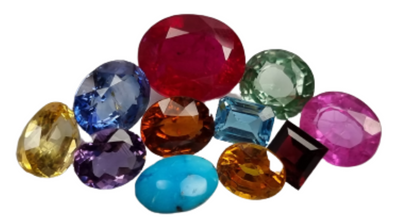Title: Chrysocolla: Exploring Its Properties, Uses, and Benefits
Introduction: Chrysocolla, with its mesmerizing blue-green hues and soothing energy, has captivated humans for centuries. In this article, we’ll delve into the origins, properties, uses, and the myriad benefits of chrysocolla, shedding light on its allure and significance in the world of gemstones and minerals.
Origins and Formation: C ysocolla is a hydrated copper silicate mineral that forms in the oxidation zones of copper ore deposits. It often occurs alongside other copper minerals such as malachite, azurite, and turquoise. Chrysocolla derives its name from the Greek words “chrysos,” meaning gold, and “kolla,” meaning glue, owing to its historical use as a soldering agent for gold. It is primarily found in locations such as the southwestern United States, Chile, Peru, and the Democratic Republic of the Congo.
Properties: Chrysocolla is renowned for its vibrant blue to green coloration, often displaying swirling patterns and bands of different shades. It has a vitreous to dull luster and can occur in various forms, including massive, botryoidal, and stalactitic. Chrysocolla is relatively soft, with a Mohs hardness of around 2.5 to 3, making it susceptible to scratches and abrasion. It is commonly associated with other secondary copper minerals, giving rise to its unique appearance.
Uses and Applications: Chrysocolla’s striking colors and patterns make it a favored material for lapidary purposes and jewelry crafting. It is often cabbed, carved, or polished into beads, cabochons, and ornamental objects such as figurines and decorative carvings. Chrysocolla jewelry, including rings, pendants, earrings, and bracelets, is highly prized for its natural beauty and soothing energy. Additionally, chrysocolla is occasionally used as an ornamental stone in sculptures and architectural applications.
Metaphysical Properties and Benefits: Chrysocolla is revered for its metaphysical properties, believed to promote harmony, balance, and inner peace. It is associated with the throat chakra, encouraging clear communication, self-expression, and emotional healing. Chrysocolla is said to soothe anxiety, stress, and emotional turmoil, promoting a sense of tranquility and serenity.
Furthermore, chrysocolla is believed to enhance creativity, intuition, and spiritual awareness, making it a favored stone among practitioners of meditation, yoga, and energy healing. Its gentle energy is said to facilitate emotional release, forgiveness, and self-acceptance, aiding individuals in letting go of past traumas and embracing their true selves.
Caring for Chrysocolla: Due to its relatively low hardness, chrysocolla should be handled with care to prevent damage and scratching. It is advisable to store chrysocolla jewelry separately from harder gemstones and metals to avoid abrasion. Cleaning chrysocolla with a soft brush or cloth and mild soap and water is recommended to maintain its luster and beauty over time.
Conclusion: Chrysocolla stands as a symbol of tranquility and transformation, inviting individuals to connect with the healing energies of the natural world. Whether admired for its aesthetic appeal, metaphysical properties, or historical significance, chrysocolla continues to inspire awe and fascination among gem enthusiasts and spiritual seekers alike. As we explore the multifaceted nature of this extraordinary mineral, we gain a deeper appreciation for its timeless elegance and profound healing potential.





